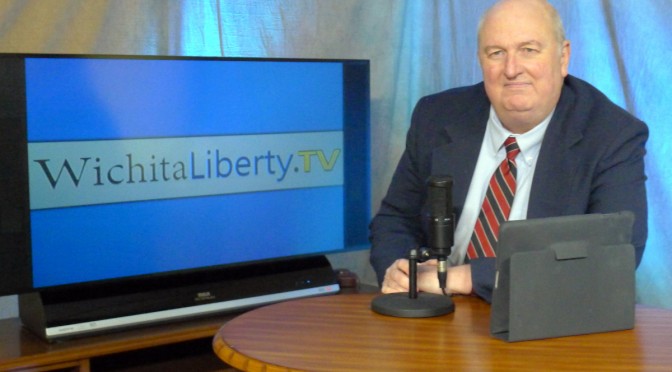 There’s a range of opinion, that’s for sure.
There’s a range of opinion, that’s for sure.
Republicans concede bill would let teachers be fired without cause (Wichita Eagle)
“Statehouse Republicans are having to abandon a key talking point in their effort to defuse teacher anger over an anti-tenure bill the Legislature passed a week ago, conceding the bill would allow school districts to fire veteran teachers without having to give a reason why. If Gov. Sam Brownback signs the bill into law, teachers would essentially be at-will employees of their school districts and able to challenge termination only if they allege the firing violates their constitutional rights.” Click here to read.
Kansas bill renews debate about how easy it should be to fire teachers (Kansas City Star)
There is a diversity of opinion, much conflicting, it seems: “It’s not too damn hard to fire a teacher,” said Marcus Baltzell, the director of communications for the Kansas National Education Association. “It’s just that the teacher has a redress of due process, a hearing officer, (a chance to say) ‘Here’s my take. Here’s what we’ve done to address the area of concern, and I believe this is unfair.’” … “Lawmakers who backed the change — it becomes law if Gov. Sam Brownback signs it — argued that dumping dead weight from the faculty has become harder than it ought to be.” … “I don’t like tenure. I never have,” said Rep. Ward Cassidy, a Republican from northwest Kansas who worked as a high school principal for 20 years. “Good principals have a whole lot of other things to do besides going through all you need to fire a teacher.” Click here to read.
In Wichita, Brownback neither praises nor criticizes measure stripping K-12 teacher tenure rights (Wichita Eagle)
“… most questions he was asked after his short talk concerned a provision to strip veteran K-12 teachers of tenure rights in the recently passed public school financing bill, which he said he has not decided whether to sign. And while he didn’t criticize that provision, he didn’t endorse it either.” Click here to read.
In Kansas, education is all about money and politics for UMEEA (Kansas Policy Institute)
“Media reaction to the school finance legislation has been pretty predictable. It focuses almost exclusively on institutions and ignores the impact on students. As usual, it’s all about money and politics. Unions, media and their allies in the education establishment (UMEEA) oppose tax credit scholarships for low income students. They rail against taxpayer money going to private schools and how that might mean a little less money for public institutions but ignore the very real purpose and need for the program. (FYI, the scholarship program is capped at $10 million; schools are expected to spend almost $6 billion this year.) Achievement gaps for low income students are large and getting worse, despite the fact that At Risk funding intended to improve outcomes increased seven-fold over the last eight years. So predictably, a program to give an alternative to low income students in the 99 lowest-performing schools is attacked by UMEEA as being unfair to institutions. Media and their establishment friends don’t even make a token mention of the serious achievement problem. It’s all about money and politics.” Click here to read.
Far-Right Kansas Legislature Sells Out Kansas Schools (Kansas Democratic Party)
“But none of these stories could compete with what the Kansas Legislature did to Kansas public schools. Under the cover of night and with virtually no debate or hearings, the Kansas Legislature forced through an education “reform” bill that stripped teachers of due process rights, passed out even more tax breaks to corporations, and potentially widened the disparity between rich schools and poor schools. School districts say new school finance bill will widen disparities.” Click here to read.
Opinion: Public education under attack (Lawrence Journal-World)
“The inclusion of these so-called “policy” provisions in the school finance bill passed by the Legislature are a mistake and will actually harm the very schools that the Kansas Supreme Court sought to assist. This is just one more step in the Legislature’s assault on public K-12 education in Kansas.” Click here to read.
Teachers are sacrificial lambs in school finance (Iola Register via High Plains Daily Leader and Southwest Daily Times)
A confused editorial. The writer says that teachers are held accountable to, among others, school administrators, but usually it is claimed that teachers need defense from this accountability. “The defense of tenure is at its best when you consider a teacher is accountable to hundreds of ‘bosses’ — parents and school boards as well as administrators.” Click here to read.
Selling education (Hutchinson News)
“Two elements of the bill are particularly troubling. One creates a $10 million-a-year corporate welfare program in support of private education. It allows large companies to enjoy a 70-percent credit against their state tax liability if they offer scholarships to at-risk students who move to private schools. This has nothing at all to do with public education equity; rather it creates a mechanism to damage the finance structure for public schools. The second concerning component redefines “teacher” as a way to eliminate due process protections. And the concept of teacher tenure is a myth. The current due process for teachers simply ensures a written termination notice and the right to challenge the decision through review by a hearing officer. In fact the Kansas Association of School Boards reported that the state sees about 10 due process claims each year – hardly a number that indicates a systemic problem that requires legislative action. The measure is little more than a way to break the teachers’ union and silence those teachers who honestly educate and advocate for their students.” Click here to read.
Richard Crowson: We Need Some Education (KMUW)
“And that guy who was smiling and joking with me in the checkout line at the grocery last Saturday? He lit a firebomb, taped a tax credit for private school supporters on it, and flung it through the window of a first grade classroom in the wee hours of Sunday morning.” Click here to read.
Rep. Rooker ‘heartsick’ over results of education finance bill (Prairie Village Post)
Small steps towards Kansas education reform are “immoral” and make this representative “heartsick.” Click here to read.
Shame, says Wichita Eagle editorial board (Voice for Liberty)
The Wichita Eagle editorial board, under the byline of Rhonda Holman, issued a stern rebuke to the Kansas Legislature for its passage of HB 2506 over the weekend. Click here to read.






 Following is news coverage and reaction to the Kansas school finance lawsuit Luke Gannon, et al v. State of Kansas.
Following is news coverage and reaction to the Kansas school finance lawsuit Luke Gannon, et al v. State of Kansas.








 When comparing Kansas school test scores to those of other states, it’s important to consider disaggregated data. Otherwise we may — figuratively speaking — let the forest obscure the trees.
When comparing Kansas school test scores to those of other states, it’s important to consider disaggregated data. Otherwise we may — figuratively speaking — let the forest obscure the trees.